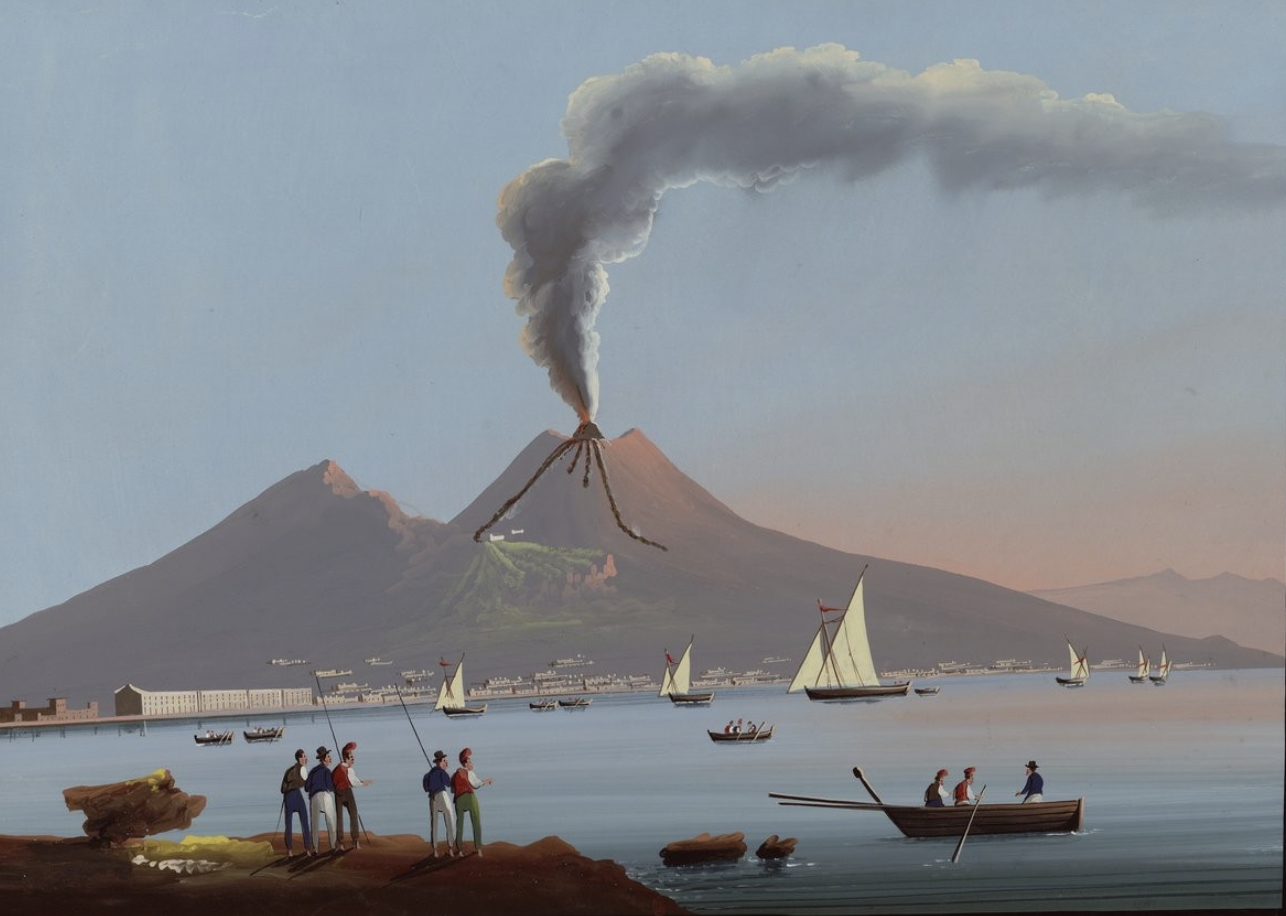Vesuvius Volcano Hike
September 15th 1853
Along her way to her final destination Beirut, the Countess embarked on an adventurous and an intriguing journey hiking and navigating the surroundings of one of the most famous and historically significant volcanoes in the world., the Vesuvius Volcano near Naples in Italy.
15 septembre 1854
“Après minuit nous partons en calèche avec la famille Fornell i, M. et Mme Lyautey, M. et Mme Gagneux (née Guaita, amie de Mme Vuitry). Nous traversons Portici et montons à cheval à Bésina. Deux heures de cavalcades aux flambeaux pour monter jusqu’à l’ermitage. Halte. Nous remontons en selle. Mauvaise marche sur la lave pendant une demi-heure. Les guides paraissent comme des fantômes infernaux et nous entourent en criant. Préparatifs pour l’ascension du cône du Vésuve.On nous met des ceintures de cuir, nos guides nous hissent avec des cordes, la lave se brise souvent sous nos pieds et nous fait reculer ou tomber, au bout d’une heure de pénible labeur nous atteignons le cratère au moment où un splendide lever de soleil éclaire le magnifique panorama au-dessous de nous. Gai déjeuner sur le sommet du Vésuve. Descente précipitée par les cendres.Nous remontons à cheval. Haltes à l’observatoire et à l’ermitage pour jouir de la vue. A Bésina nous descendons dans le théâtre romain d’Herculanum englouti dans la lave, puis nous remontons en voiture et arrivons à Naples à 1 heure – Soirée chez les Fornelli.”

After the midnight excursion from Portici to “Bésina” on horseback. The term “Bésina” is mentioned in the journal, but we assume it is an error in the journal or in the transcription.. The correct place name is probably “Resina” referring to the town of Ercolano, also known as Resina, situated near Mount Vesuvius. From there they continued the ascend, which the Countess described as difficult due to walking on lava for half an hour amidst the shouting guides accompanying them.
She continues describing the climbing of the Vesuvius volcano, they wore leather belts and they were pulled up by their guides through ropes lava crackling under their feet causing them to step back or fall. She describes the ascend till the crater of the volcano as “an hour of strenuous effort”. They reach the top as the sunrise magnificently illuminated the panoramic view from the top. They had breakfast at the summit before descending on horseback, stopping at the observatory and the hermitage to admire the view as well as the Roman theater of Resina, Herculaneum that was destroyed and buried by the eruption of Mount Vesuvius in 79 AD.
Not only did the Countess describe her experience climbing the volcano, her passage emphasizes elements of cultural exploration, the beauty of natural wonders, and her spirit of adventure. A typical feature we noticed throughout the entirety of her journey where the Countess constantly provides evidence of her cultural curiosity and admiration for the beauty of her surroundings.